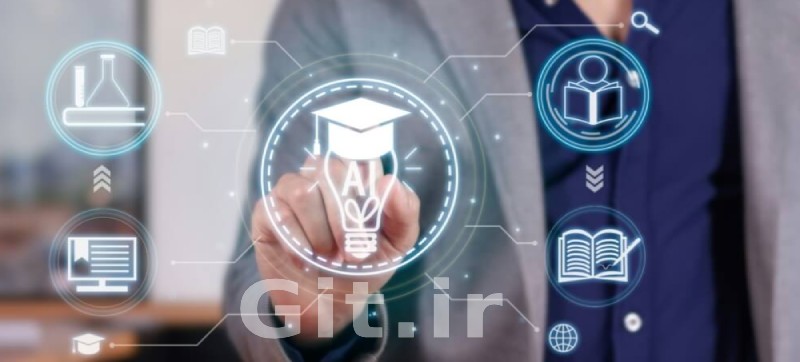AI Strategies in Education
Learn how Artificial Intelligence (AI) can improve learning experiences, the advantages and disadvantages of using AI in education, and practical ways to integrate AI into your classroom.

As Artificial Intelligence (AI) and generative AI (GenAI) continue to evolve, they are becoming more prevalent in various industries, including education. These innovative technologies can help automate administrative tasks, create lesson plans, and enhance learning outcomes. However, it is essential to consider some risks as you start to integrate AI into your teaching and learning processes.
This article provides suggestions on how to approach AI in education, highlights beneficial use cases, and discusses potential challenges. Additionally, you will discover how to incorporate AI into your educational programs by exploring various AI tools and learning how to effectively prompt them as you develop your strategies.
What is AI?
Before diving into AI's role in education, it’s essential to understand the basics of Artificial Intelligence (AI) and generative AI (GenAI).
AI refers to the creation of computer systems that can perform tasks typically requiring human intelligence. These tasks include speech recognition, decision-making, and pattern recognition. The term covers various technologies, including machine learning, which utilizes algorithms, and deep learning, which employs neural networks that mimic the human brain.
When incorporating AI into your teaching methods, you will likely engage with GenAI. GenAI enables users to enter prompts and generate new content, such as text, images, code, and other media.
GenAI tools often utilize natural language processing (NLP), allowing them to understand and respond to everyday human language, making them easy to use. Popular GenAI tools like ChatGPT and DALL-E exemplify this technology. Thanks to NLP, you do not need to understand the intricate details of AI to take advantage of AI tools effectively.
Learn more: Understanding Artificial Intelligence: Definition, Applications, and Types
How to Approach AI in Education
As AI and GenAI tools continue to evolve, it is crucial to treat them as developing technologies. When integrating AI into your workflow, keep in mind that these tools are designed to enhance and support your existing processes, not replace them.
Here are four recommendations for effectively incorporating AI in an educational setting:
Value the Educator-Student Relationship: The connection between educators and students is vital for successful learning, and current technologies cannot replicate this. Always review your AI tool’s output, apply your expertise, and customize your approaches to fit your students’ unique needs.
Create a Unified AI Strategy: Collaborate with boards, administrators, and fellow teachers to establish a cohesive approach to AI within the educational system. When everyone is aligned on an AI strategy, you can maximize AI's potential while also protecting students and the school system from potential risks.
Integrate Modern Teaching Principles: Continue to apply contemporary teaching and learning principles in your educational practices. AI learns from the data it processes, which may not always be the latest or most accurate. It’s essential to incorporate your research and insights as an experienced educator into the learning experience.
Stay Informed on AI Developments: Given the rapid advancements in technology, staying updated on the latest AI developments is crucial. Monitor updates and new tool releases to ensure you are using your AI tools effectively. Following the latest news in AI and GenAI will help you make informed decisions in your teaching.

Benefits of Using AI in Education
Just as AI has positively impacted various sectors, its application in education also offers numerous advantages. Here are some beneficial ways to integrate AI into educational practices:
Automate Administrative Tasks: AI can help streamline routine administrative duties, such as scheduling, organizing student project groups, and conducting basic grading. Additionally, AI tools can assist in drafting lesson plans, creating worksheets, and composing emails, allowing educators to focus more on teaching.
Enhance Research and Brainstorming: AI can serve as a valuable partner during research and brainstorming sessions. For instance, educators can use tools like ChatGPT to generate multiple variations of essay questions on a specific topic. Students can also leverage AI to clarify their questions about a research topic or to generate ideas for further exploration.
Personalize Learning Experiences: AI can track student progress and pinpoint areas where they may need extra support. This information allows educators to develop customized learning plans and assignments tailored to the individual needs of each student, fostering a more personalized learning experience.
Potential Challenges of AI
While the benefits of AI are significant, there are also challenges and risks to consider. Here are some potential areas of concern to be aware of before integrating AI into your classrooms:
Ethical Concerns and Bias: All AI systems begin with human-generated data and design, which means they can inherit the biases present in that data. It is crucial to understand the ethical guidelines surrounding the AI tools you plan to use and to be mindful of potential biases in the AI outputs that you incorporate into your teaching and learning processes.
Privacy Concerns: Certain AI tools store and analyze user inputs to tailor future outputs. Therefore, it's important to exercise caution when entering sensitive or personal information about educators and students. Before using any AI tool in your educational workflow, review the company's data and privacy policies to understand what information they collect, how it is used, and whether you can opt out of data storage.
Concerns About Cheating or Dependence: While AI can enhance learning, there is a risk of students becoming overly reliant on these tools. This dependence can impede the development of critical thinking skills. As an educator, consider strategies to foster critical thinking and independence, recognizing that students may use generative AI tools for writing essays and completing homework assignments.

How to Use AI in Education
Creating your AI strategy involves selecting tools that align with your educational system and identifying use cases that educators find suitable for AI integration.
Here are some popular generative AI (GenAI) text tools to consider:
ChatGPT: Developed by OpenAI, this application gained significant attention as the first of its kind to capture widespread public interest upon its launch.
Bard: Google's application, which is similar to ChatGPT, is often praised for its user-friendly interface and more casual tone compared to OpenAI's offering.
Bing Chat: This application from Microsoft operates similarly to its Bing search engine but is enhanced with OpenAI's generative technology, providing a seamless integration of search and chat capabilities.
Claude: Created by Anthropic, this application can produce longer and more detailed text inputs and outputs.
As new GenAI tools are continually being developed, released, and updated, it's essential to evaluate which text-generation tools best suit your educators. Test the user experience and the quality of output for each tool, and take into account the privacy and ethical considerations that guide the development of these technologies.
Learn more: What Is ChatGPT and How to Use It